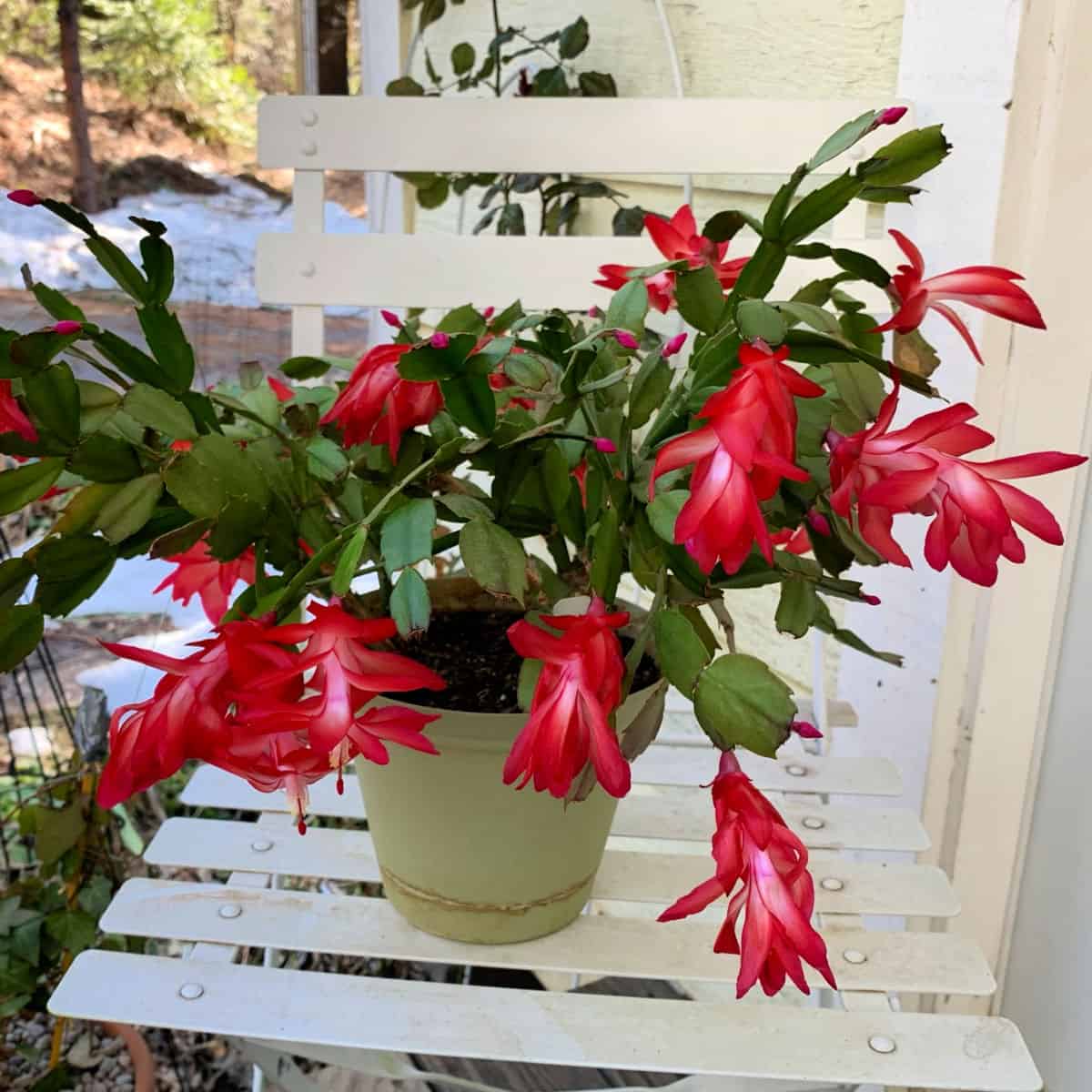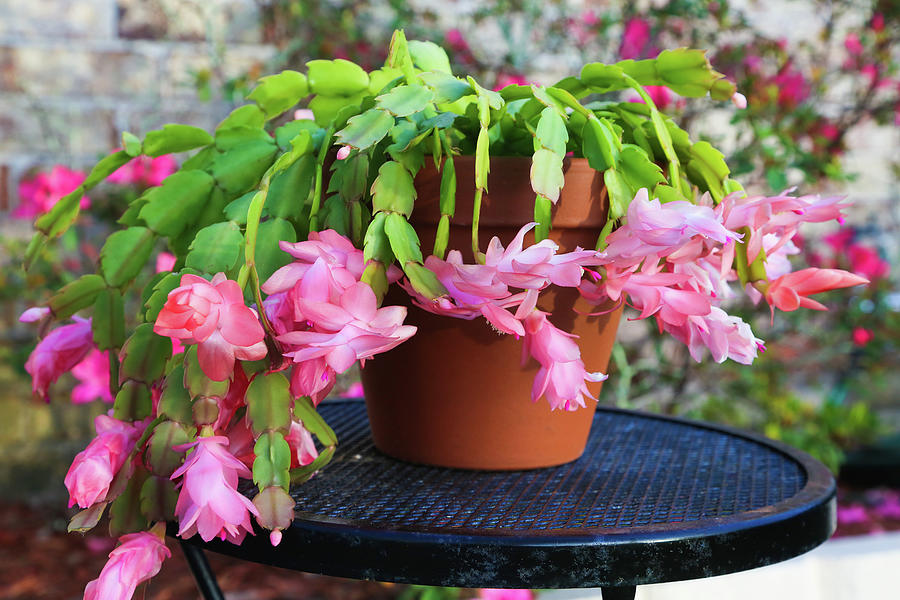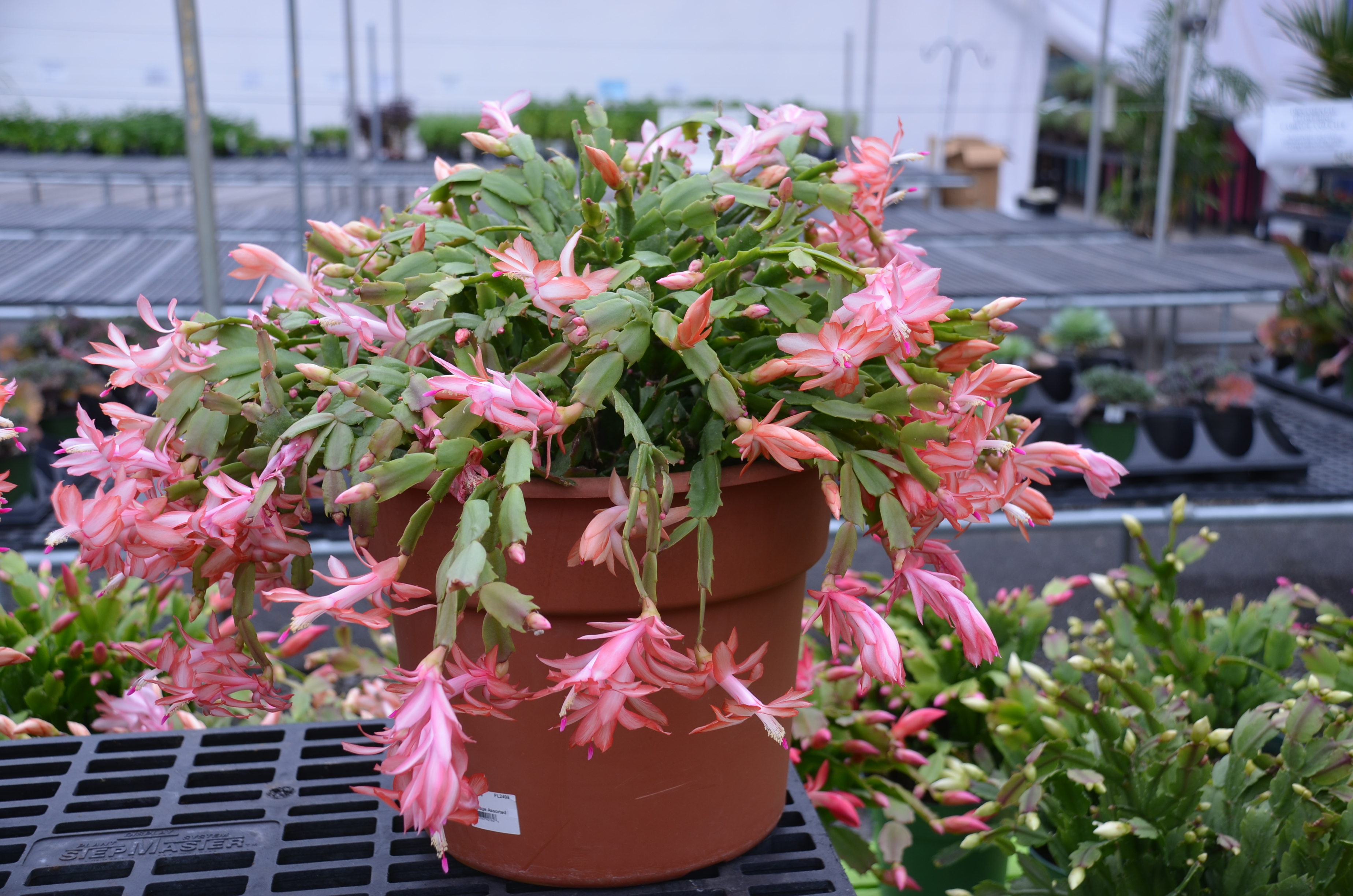

If it is just a little too dry, it will shed its phylloclades. The Easter cactus is the most difficult out of all the holiday cacti to grow and care for. These flowers can be red, pink, or royal purple, and they are considerably brighter than the Thanksgiving and Christmas cacti flowers. The plant normally blooms in the spring in April and May, and it sometimes blooms once again in the fall around Halloween. The flaring flowers are shaped like trumpets and the petals are pink, red, and pointy. The scientific name for the Easter cactus is Hatiora gaertneri. Unlike the Christmas cactus, the Thanksgiving cactus flowers are assymetrical, and they grow horizontally from the stem segment tips. The flowers come in yellow, white, red, and pink, and its anthers are yellow. The flowers grow a little more out to the side than the Christmas cactus. The Thanksgiving cactus blooms between mid Thanksgiving to late December, and occassionally in January. Hummingbirds pollinate its two to three inch long satiny flowers.

The leaves are square-shaped with pincers along the edges, making it known as the “crab cactus” or lobster cactus. The scientific name for the Thanksgiving catcus is Schlumbergera truncata.

The plants drop down, so the plants work best in a hanging basket. Its anthers are a purple brown, and the symmetrical flowers are evenly distributed around the flower tubes. The flowers are typically red or white, and sometimes yellow. The Christmas Cactus blooms from late November through early February, and the flowers hang down. The plant lives for a very long time, and many people pass the same plant down to future generations by propagating the stems. The scientific name for the Christmas cactus is called Schlumbergera bridgesii. Allow the stem to root, and you will have another holiday cactus blooming in no time. Fill the pot with a mixture of sterile potting mix and sand. Once the wounded end forms a callus, you can put the stem in a pot that has a drainage hole in the bottom. You can easily share your holiday cacti by breaking off a Y-shaped stem, so long as it has two to five segments. You should keep your holiday cacti in a cool place, preferably between 50 and 65 degrees Fahrenheit. Once you see new growth, however you need to start watering again. The Easter cactus especially need this period of relative dryness. They should not, however, be sitting in water, so ensure that the pots drain properly.Īfter the cacti flower, they enter a dormant period, during which you can water more sparingly. When the plants are growing, they need to be watered whenever the surface of the soil is dry. The Easter cactus leaves have a bristled appearance.Īll of the holiday cacti need to be watered regularly, as they are not drought resistant like regular cacti. Christmas cactus leaves are smaller than Thanksgiving cactus leaves, and they also have smoother edges. The Thanksgiving cactus, also known as the lobster cactus, has claw-like leaves where the edges are hooked.

The cacti can be differentiated by the shape of their leaves, which are the flat, plump stems that hold the blooms. Traditionally speaking, the flowers would be pink, scarlet, and magenta, but nowadays, you can find holiday cacti with blooms of yellow, purple, orange, apricot, salmon, and white. They grow from trees, and are known as epiphytes. They are given these names because they bloom around these holidays.Īll three plants are native to Brazil. The three common holiday cacti are the Christmas Cactus, Thanksgiving Cactus, and Easter Cactus. Typically the flowers are a mix of orange, pink, and red, but what other types of Christmas cactus plants are there? What varieties and colors exist and what is the difference between these plants? Keep reading to learn more. When the weather is right, the cactus blooms. The infamous leaves are delicately connected, one to the other, and they form those elegant arms. You might have heard of the Christmas cactus, the one that blooms in cold weather.


 0 kommentar(er)
0 kommentar(er)
